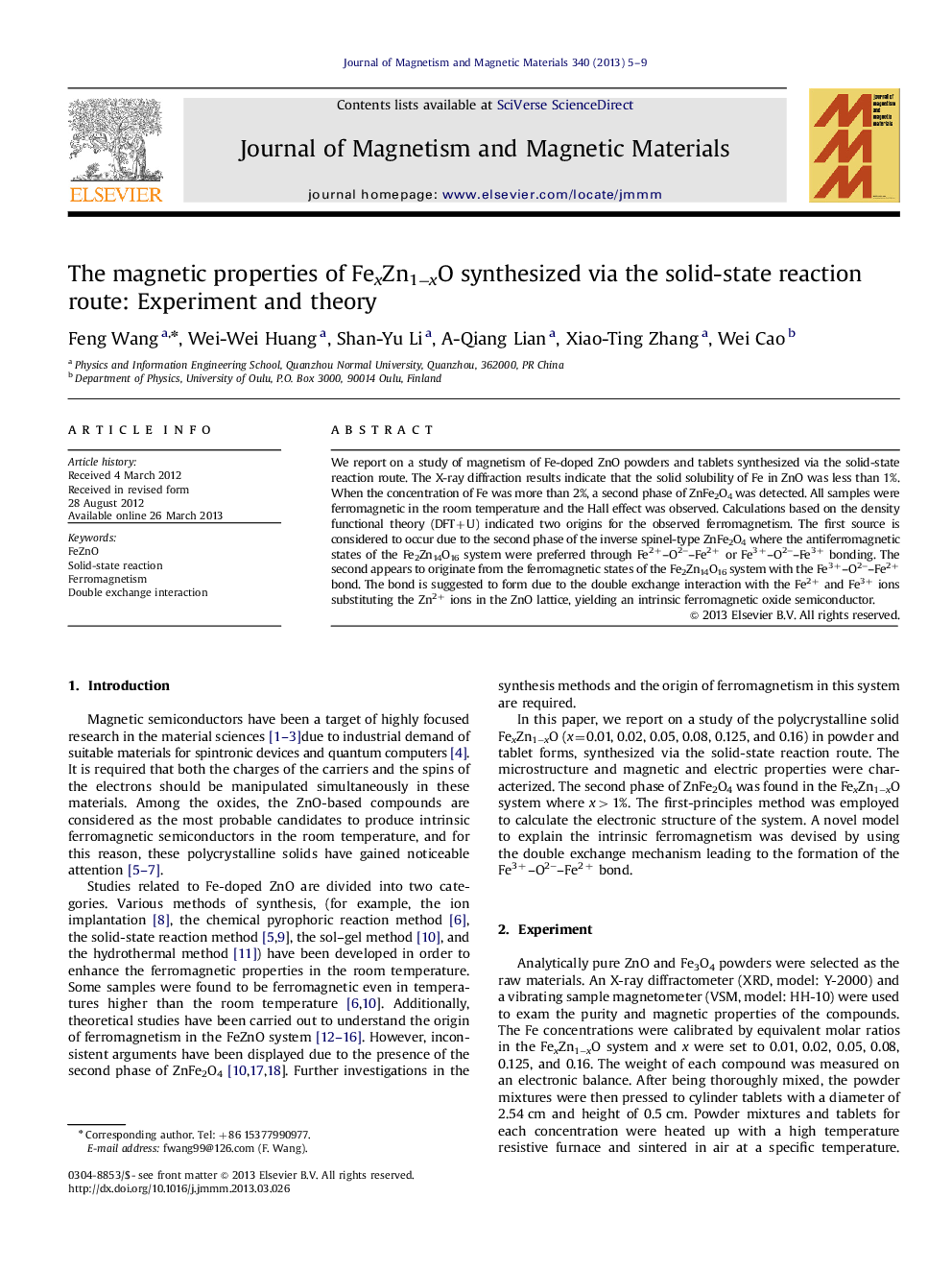| Article ID | Journal | Published Year | Pages | File Type |
|---|---|---|---|---|
| 8158503 | Journal of Magnetism and Magnetic Materials | 2013 | 5 Pages |
Abstract
We report on a study of magnetism of Fe-doped ZnO powders and tablets synthesized via the solid-state reaction route. The X-ray diffraction results indicate that the solid solubility of Fe in ZnO was less than 1%. When the concentration of Fe was more than 2%, a second phase of ZnFe2O4 was detected. All samples were ferromagnetic in the room temperature and the Hall effect was observed. Calculations based on the density functional theory (DFT+U) indicated two origins for the observed ferromagnetism. The first source is considered to occur due to the second phase of the inverse spinel-type ZnFe2O4 where the antiferromagnetic states of the Fe2Zn14O16 system were preferred through Fe2+î¸O2âî¸Fe2+ or Fe3+î¸O2âî¸Fe3+ bonding. The second appears to originate from the ferromagnetic states of the Fe2Zn14O16 system with the Fe3+î¸O2âî¸Fe2+ bond. The bond is suggested to form due to the double exchange interaction with the Fe2+ and Fe3+ ions substituting the Zn2+ ions in the ZnO lattice, yielding an intrinsic ferromagnetic oxide semiconductor.
Related Topics
Physical Sciences and Engineering
Physics and Astronomy
Condensed Matter Physics
Authors
Feng Wang, Wei-Wei Huang, Shan-Yu Li, A-Qiang Lian, Xiao-Ting Zhang, Wei Cao,
